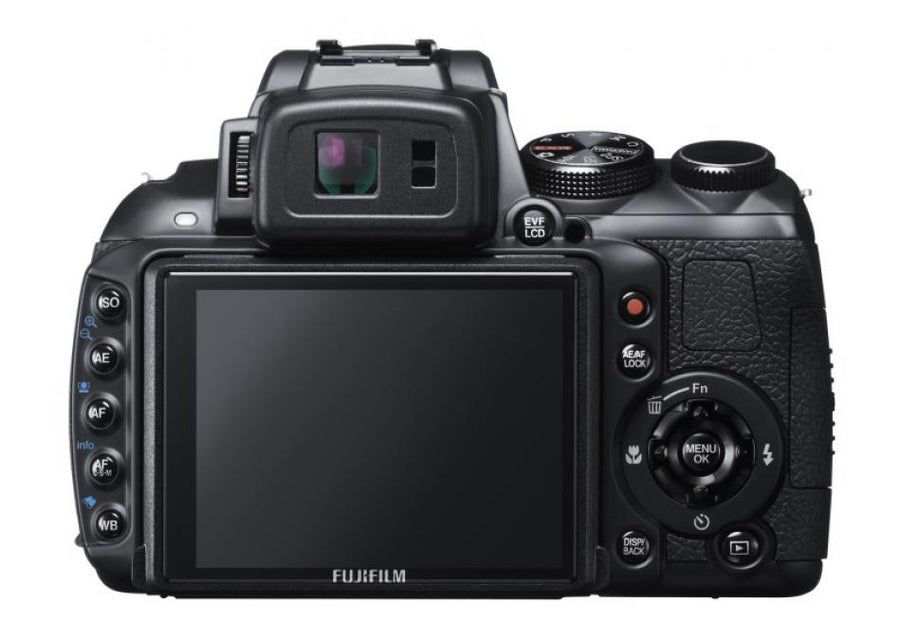Fujifilm FinePix HS30EXR review
Excellent ergonomics and superb image quality in low light, but also a few issues regarding performance and video capture
Specifications
1/2in 15.9-megapixel sensor, 30.0x zoom (24-720mm equivalent), 687g
The sensor’s key specifications haven’t changed since the HS20EXR, but Fujifilm claims a 30 per cent reduction in noise levels from this redesigned sensor. We struggled to spot this improvement, though, even when comparing identical shots from our controlled studio tests. Then again, noise levels from the HS20EXR were pretty good, so indistinguishable output from this updated model is no bad thing.

The complex texture of these pebbles looks slightly blocky at 16 megapixels, possibly a limitation of the EXR technology – click to enlarge
As before, the sensor struggled to deliver on the promises of the 16-megapixel resolution, with a slightly blocky appearance to fine details. 16-megapixel photos also revealed the limitations of the lens, which displayed some chromatic aberrations where the red, green and blue elements of the image don’t line up perfectly. However, switching to 8 megapixels – as this EXR-branded sensor is especially designed to do – gave significantly crisper details, extremely low noise and the option to expand the dynamic range to avoid washed out highlights. Some people may feel that 8 megapixels is an unacceptable compromise but we disagree; it’s plenty for A4 prints.

By switching to 8 megapixels, details appear much crisper. There’s impressively little noise considering the ISO 1000 sensitivity used in this shot – click to enlarge
Ultra-zoom cameras are often used for sports and wildlife photography, so a fast continuous drive mode is useful for capturing these fast-moving subjects. We couldn’t get it to deliver on its 11fps top quoted speed, but 10.1fps in our tests, slowing to 2.6fps after 13 frames, is still an excellent result. This is only when shooting at 8 megapixels, though – for 16-megapixel shots, it managed 7fps for six frames before slowing to 1fps. Various slower speeds are also available, but sadly none of them offer continuously updating autofocus. Live view is unavailable during continuous capture, too, and even the exposure settings are fixed for the duration of capture. This needn’t be a problem if you’re shooting a subject that’s staying put, but it makes it very difficult to capture multiple shots of moving subjects.
Our biggest concern with the HS20EXR – and all of Fujifilm’s recent compact cameras for that matter – sadly hasn’t been resolved. While it can take a shot every 1.4 seconds in normal use, most of the controls are inoperable during the time it takes to save photos to memory card. This might only delay the user by a second or two, but raw mode or continuous capture meant lengthier waits. After selecting both raw and continuous modes and capturing a string of shots, we had to wait for 11 seconds to regain control of the camera. Even for minor delays, it’s confusing and annoying to press buttons and nothing to happen. It’s particularly frustrating because, in all other respects, this camera is extremely responsive. The plethora of physical controls is its best feature, but these delays take the shine off.

All those handy controls, but they are frustratingly inoperable at times
There’s a lot to like here but the HS30EXR faces some stiff competition. Its strongest rival is theFujifilm X-S1, which raises the stakes even higher for image quality in low light and for video capture, although it costs around £200 more. Meanwhile, the Panasonic Lumix DMC-FZ150 is even better for video capture. While it trails slightly behind the Fujifilm cameras in low light, in most other respects it has the upper hand. The HS30EXR is a strong contender but the Panasonic FZ150 remains our top recommendation.
Basic Specifications | |
|---|---|
| Rating | **** |
| CCD effective megapixels | 15.9 megapixels |
| CCD size | 1/2in |
| Viewfinder | electronic (920,000 pixels) |
| Viewfinder magnification, coverage | N/A |
| LCD screen size | 3.0in |
| LCD screen resolution | 460,000 pixels |
| Articulated screen | Yes |
| Live view | Yes |
| Optical zoom | 30.0x |
| Zoom 35mm equivalent | 24-720mm |
| Image stabilisation | optical, sensor shift |
| Maximum image resolution | 4,608×3,456 |
| File formats | JPEG, RAW, MPO; QuickTime (AVC) |
Physical | |
| Memory slot | SDXC |
| Mermory supplied | 25MB internal |
| Battery type | Li-ion |
| Battery Life (tested) | 600 shots |
| Connectivity | USB, AV, mini HDMI |
| Body material | plastic |
| Lens mount | N/A |
| Focal length multiplier | N/A |
| Kit lens model name | N/A |
| Accessories | USB and AV cables |
| Weight | 687g |
| Size | 98x132x133mm |
Buying Information | |
| Warranty | one-year RTB |
| Price | £302 |
| Supplier | http://www.amazon.co.uk |
| Details | www.fujifilm.co.uk |
Camera Controls | |
| Exposure modes | program, shutter priority, aperture priority, manual |
| Shutter speed | 30 to 1/4,000 seconds |
| Aperture range | f/2.8-11 (wide), f/5.6-11 (tele) |
| ISO range (at full resolution) | 100 to 3200 |
| Exposure compensation | +/-2 EV |
| White balance | auto, 6 presets with fine tuning, manual |
| Additional image controls | Color, tone, sharpness, noise reduction, dynamic range, film simulation |
| Manual focus | Yes |
| Closest macro focus | 1cm |
| Auto-focus modes | multi, centre, flexible spot, face detect, tracking |
| Metering modes | multi, centre-weighted, centre, face detect |
| Flash | auto, forced, suppressed, slow synchro, red-eye reduction |
| Drive modes | single, continuous, self-timer, AE bracket, panorama, 3D |










